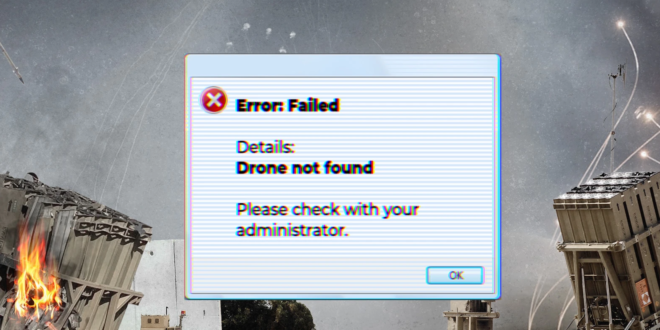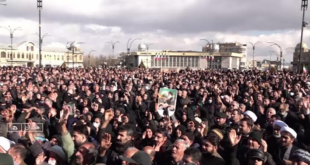Israel’s once-vaunted Iron Dome defense system, now marred by technical failures and health scandals, reveals a crumbling illusion of invulnerability that cannot protect against large-scale, sophisticated missile salvos from the Resistance Axis.
The Iron Dome, touted as Israel’s most-effective defense shield, was designed to project an image of security and technological superiority. Promoted as a cutting-edge mobile air defense system, it was intended to symbolize an impenetrable barrier safeguarding the occupation state from external threats.
However, the reality reveals a different picture: much like a child in a knight costume – impressive against plastic swords but utterly defenseless against real weapons – the Iron Dome excels mainly against the relatively crude weapons of the Palestinian resistance in Gaza.
Israel’s carefully-crafted image of its most prized defensive weapon is part of a broader branding effort, rooted in techniques pioneered by Edward Bernays. The occupation state has positioned itself as a cosmopolitan, progressive, and democratic society – in stark contrast to neighboring West Asian states, which it portrays as violent and repressive.
The Iron Dome is not just a defense system but also a psychological construct designed to reinforce the image of an invulnerable entity under constant threat from less enlightened neighbors.
A crumbling shield in the north
Despite its reputation, the Iron Dome’s performance has often fallen short. Numerous videos have surfaced showing malfunctions – the Tamir missiles performing erratic maneuvers, exploding near civilian areas, or being triggered by false alarms and causing damage to infrastructure.
These failures contrast starkly with Israel’s claims of a 90–99 percent interception rate. Professor Emeritus Theodore Postal of the Massachusetts Institute of Technology (MIT) offers a vastly different assessment. “I would say that the intercept rate is at best 4 or 5 percent,” Postal said in an interview with the Boston Globe last October.
In a 2018 study published in the Journal of Global Security Studies, Michael Armstrong also questions the Iron Dome’s touted “90 to 99 percent” interception rate. For starters, he clarifies that “the interception rate is the percentage of rockets destroyed before they hit defended areas; it ignores rockets over undefended areas.”
In other words, the defense system is, from the onset, only targeting a small portion of the rockets fired. For example, Israeli officials claimed that of the approximately 1,000 projectiles fired into Israel by Hamas during November 2012’s Operation Pillar of Defense operation, Iron Dome identified two-thirds as “not posing a threat” and only intercepted 90 percent of the remaining 300 rockets. Armstrong points out further holes in the calculations of Iron Dome proponents:
The empirical analysis suggests that Iron Dome batteries intercepted less than 32 percent of all hazardous rockets during Pillar of Defense, but between 59 and 75 percent during Protective Edge … The calculations further suggest the number of rockets hitting populated areas during Pillar of Defense may have been understated. The number of threats to populated areas, on the other hand, may have been overstated. This implies that Iron Dome’s effective interception rate may have been significantly lower than reported.
The situation is particularly dire in northern occupied territories, where the town of Kiryat Shmona – a settlement once believed to be under the Iron Dome’s protection – has seen its population flee from rising threats.
Thousands of residents have abandoned their homes, exposing the vulnerabilities the Iron Dome was supposed to eliminate. With Hezbollah expanding its rules of engagement, the number of displaced persons is likely to rise, further exposing the system’s inadequacies.
As Israel desperately scrambles to expand its defense options, the new solutions prove equally flawed, leaving the population vulnerable beneath a defense system that no longer lives up to its myth. The once-vaunted shield is crumbling, and with it, the carefully constructed narrative of invincibility that has long underpinned Israel’s security strategy.
Iron Dome’s cancer curse
Beneath the surface of Israel’s Iron Dome lies a darker, more ominous reality – one that threatens not just the myth of invincibility but the lives of those operating this shield. A 2021 investigation by Yediot Ahronoth revealed serious allegations about the health risks faced by occupation soldiers stationed near the Iron Dome’s powerful radar systems.
These radar systems, nicknamed “the chipper” and “the toaster” by those who work near them, emit intense heat, turning their surroundings into an invisible crucible. Several soldiers have come forward with harrowing testimonies of life-threatening illnesses they believe are linked to their service.
Ran Mazur, who was diagnosed with bone cancer a year after his discharge, described the excruciating pain that gnawed at him during his service, pain that military doctors all too easily dismissed.
Yonatan Chaimovich likened the experience of standing near the radar to his body “boiling from the inside,” a haunting metaphor that captures the unseen dangers of their exposure. Shir Tahar and Omer Hili Levy, both of whom developed cancer after their service, are among several who believe their illnesses are inextricably linked to their time spent in the shadow of the Iron Dome.
Despite these accounts, the Israeli military has steadfastly denied any unusual increase in cancer rates among Iron Dome personnel. They claim that their extensive monitoring and safety protocols have shown no significant difference in morbidity between Iron Dome soldiers and those in other military units.
But the numbers tell a different story: in 2011, out of 240 soldiers who enlisted in three training cycles for the Iron Dome, at least six developed cancer either during or shortly after their service – a statistic that raises questions about the true cost of operating this defense system.
Since 7 October, no new investigation has ventured to uncover how many within Israel’s occupation forces have fallen victim to the silent menace of tumors during this latest surge of conflict.
High-tech illusions
If the Iron Dome was not riddled with flaws, Israeli military strategists would not be rushing to explore alternatives to maintain the state’s illusion of invulnerability. Hezbollah’s Katyusha barrages, though seemingly primitive, have been tactically deployed to overwhelm the Iron Dome and pinpoint its locations, forcing Israel to reconsider its defense strategy.
Enter the “Magen Or,” or Iron Beam – a name that translates to “Shield of Light” in Hebrew. Developed by Rafael Advanced Defense Systems, this represents the latest attempt by the occupation state to stay ahead of the Axis of Resistance and exposes Israel’s growing insecurity.
Unlike the Iron Dome, which relies on costly interceptor missiles – at around $50,000 each – the Iron Beam promises to neutralize threats using a high-powered laser – a concept that seems straight out of science fiction.
The Iron Beam, however, is still largely experimental and untested in real combat. Deployed on the Gaza front in late 2023, it has yet to prove itself as a reliable defense system in the chaos of war.
Israel’s embrace of laser technology, such as Magen Or, is part of a broader trend in the defense industry, driven not just by innovation but also by substantial aid packages from the US. These foreign funds, funneled through powerful lobbies like AIPAC and J Street, contribute to Israel’s portrayal as a technological powerhouse.
Yet, this image is less a testament to domestic ingenuity and more a product of vast financial resources often spent on costly projects that may not withstand the test of real-world conflict.
High-stake risks
The Iron Beam’s range is limited to about 10 kilometers and falters under adverse weather conditions – an Achilles heel that could prove disastrous in a full-scale conflict. The system requires vast amounts of energy, provided by a large generator, to produce the laser beams necessary for its operation.
This logistical challenge and the necessity of maintaining sophisticated infrastructure make the Iron Beam seem doomed to fail under real combat pressures.
Tel Aviv’s shift toward advanced technologies like the Iron Beam reveals a deeper issue within its military strategy. By focusing on high-tech defenses, Israel addresses symptoms rather than the root causes of its ongoing conflict. Reliance on unproven technology carries the risk of catastrophic failure, especially when combined with Israel’s recent shift toward riskier strategies.
Adding to the complexity is the Scorpius G electronic warfare system, another high-tech solution touted by Israel. Developed by Israel Aerospace Industries (IAI), Scorpius G is designed to detect, classify, locate, and jam advanced radar systems.
However, like the Iron Beam, Scorpius G’s performance in the field remains unproven, further illustrating the precariousness of Israel’s defense posture – one that could ultimately leave it vulnerable in its rushed quest to maintain a strategic edge.
As the region’s Axis of Resistance continues its operations with precision and effectiveness, and as Israeli settlers in occupied territories face mass evacuations, the pressure on these new defense systems to deliver is immense.
Whether they will provide the promised protection or collapse under the weight of expectations remains an open question – one with potentially dire consequences for Israel’s security and stability.
 Eurasia Press & News
Eurasia Press & News




